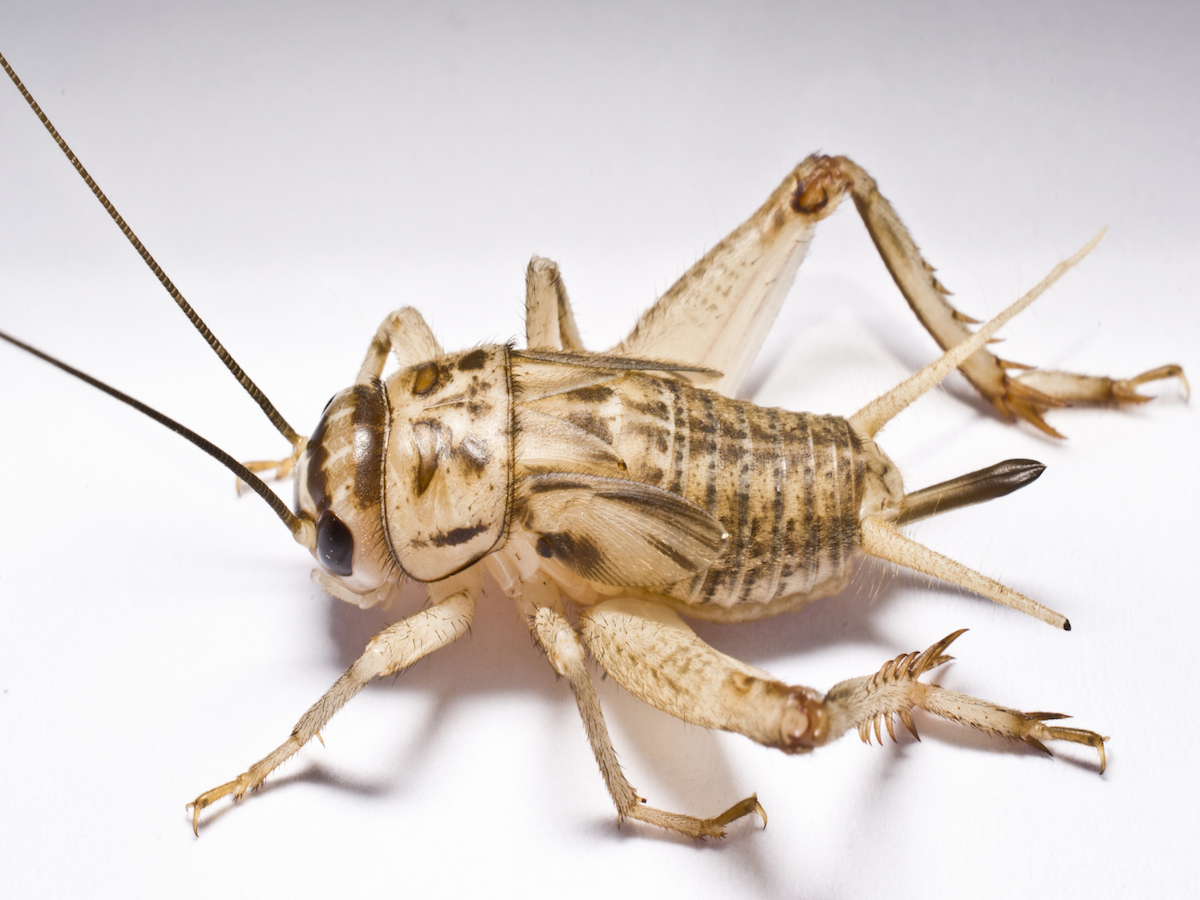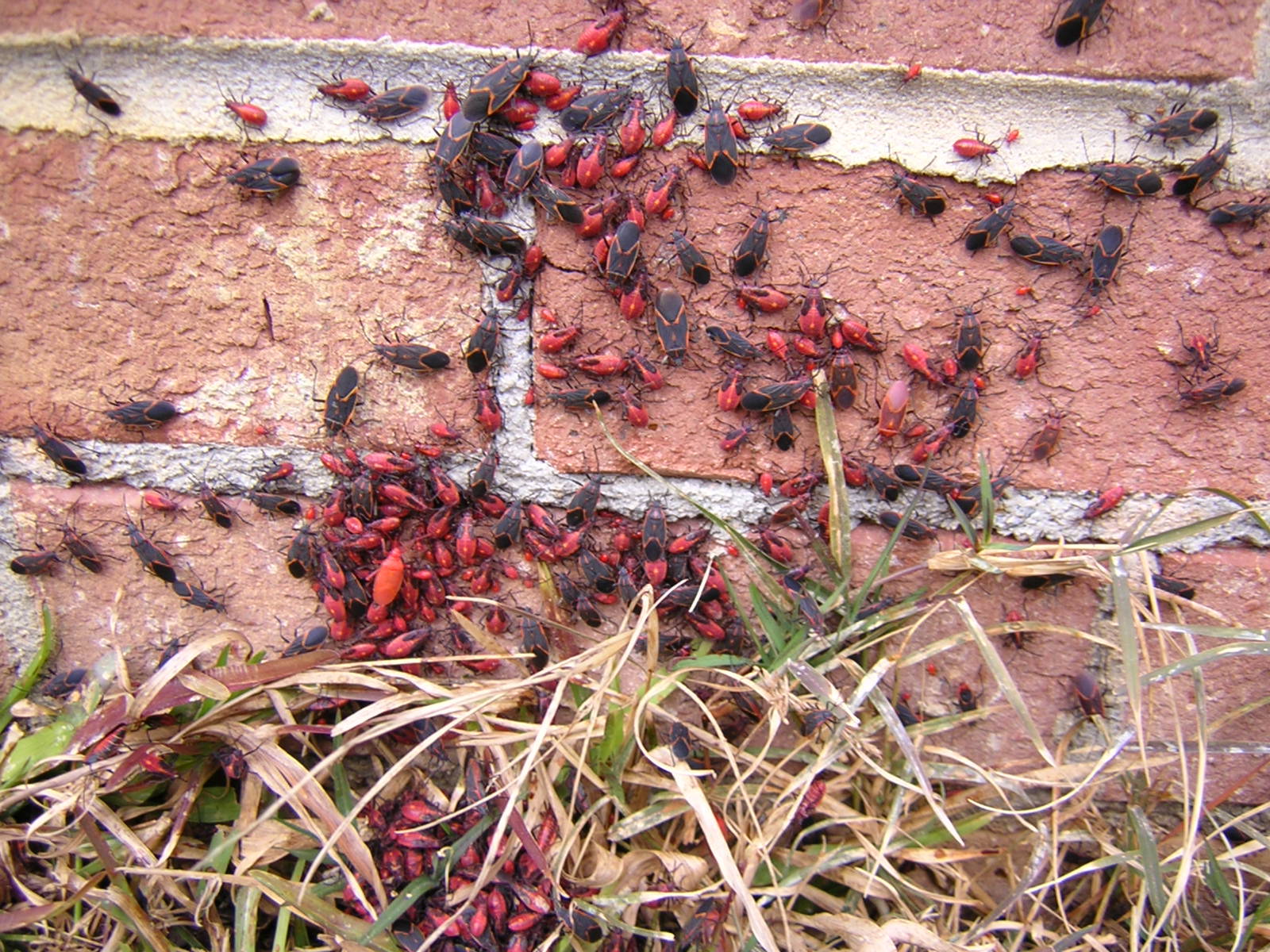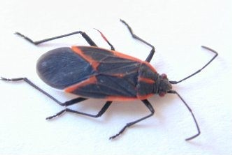House Crickets Acheta Domesticus (Linnaeus)

House Crickets Identification
Color: Yellowish brown with 3 dark cross bands on head
Size: 3/4 – 7/8” (16-22 mm)
Legs: 6
Antennae: Yes
Shape: Long, winged
Region: All
What are House Crickets?
House crickets get their common name from the fact that they often enter houses where they can survive indefinitely. This cricket species was introduced from Europe and is now found throughout the United States but primarily east of the Rocky Mountains.
Interestingly, they are known for their loud chirping which is caused when males rub their front wings together to attract females.
What Do House Crickets Look Like?
Adult house crickets are light yellowish brown in color with three dark crossbands on their head. They are about 3/4 – 7/8 inch in length and have a threadlike antennae that is often longer than its body, and wings that lie flat on its back. Nymphs are wingless but otherwise look similar to adults.
Outside, house crickets feed on plants and dead or live insects, including other crickets. Indoors, they can feast on fabric, including clothing and carpet. Wool, cotton, silk and synthetic fabrics as well as clothes soiled with perspiration are especially attractive to house crickets.
House crickets typically live outdoors during the warmer seasons and are especially fond of garbage dumps. They are often attracted to electric lights in larger numbers, sometimes by the thousands, and rest on vertical surfaces such as light poles and house walls. However, when cold weather approaches, they will move indoors to houses and sheds because of the moisture and warmth they provide.
House crickets are nocturnal or active at night and usually hide in dark warm places during the day. During warm weather months, house crickets typically live outdoors and are especially fond of garbage dumps. They are often attracted to electric lights in larger numbers, sometimes by the thousands, and rest on vertical surfaces such as light poles and house walls. However, when cold weather approaches, they seek shelter in houses and sheds because of the moisture and warmth they provide.
While house crickets don’t post a health risk to humans, they can cause damage to property, specifically clothing, carpets and areas covered in fabric. Favorite fabrics include wool, cotton, silk and synthetics. As house crickets typically surface feed, they leave the area roughened from pulling the fibers loose while eating. In the case of a heavy infestation, large areas of fabric may be eaten out. This is why it’s important to get rid of crickets as soon as possible.
The most obvious sign of a house cricket infestation is the presence of crickets in the home. They are drawn to warm, moist environments within structures. Another sign of a cricket infestation is the chirping noise the male house crickets often make, which is done when they rub their front wings together. This “calling song” serves to attract females and, since they’re nocturnal, often occurs at night. If homeowners hear this chirping, it could be a sign of a house cricket infestation. Chewed fabric is also a sign of a house cricket infestation. Mandible marks along chewed edges are often visible with magnification. These marks are much less than 1 mm wide.
The most effective way to get rid of crickets and prevent future infestations is to reduce areas of moisture in and around your home. Mow the lawn, weed plant beds and move woodpiles away from the structure. Provide adequate ventilation in crawl spaces, basements, etc. Consider changing outdoor lighting to less-attractive yellow bulbs or sodium vapor lamps. It is also important to seal possible points of entry for house crickets around the house, including window and door frames and holes in masonry. A vacuum can also be used to remove house crickets and their eggs.
If you suspect a house cricket infestation in your home, the best course of action is to contact a licensed pest control professional. They will conduct a thorough inspection to identify the full extent of the problem. Once the situation is properly identified, the appropriate control measures can be taken.
You can find a certified pest professional near you with the helpful zip code search below.




